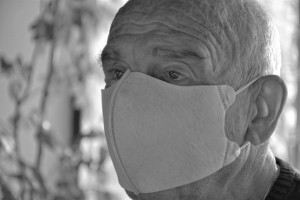
Geneva: At least nine people are losing their lives to COVID-19 every minute, and increase in the risk of even more transmissible and dangerous variants very much there, the ongoing 74th World Health Assembly has been told. It was further informed that at least 115,000 health and care workers died while performing their duty.
Dr. Michael Ryan, Executive Director, WHO Health Emergencies Programme today warned the WHA that the World Health Organization was facing a funding shortfall of more than 70% when only received funds are considered. This he said has left the Organization in “real and imminent danger” of being unable to sustain core functions for urgent priorities.
“The challenges faced by WHO in responding rapidly to acute events are exacerbated by the fact that over 90% of funds received so far are specified or earmarked,” Dr. Ryan said. He stressed the need to move forward to improve preparedness, preventing emerging risks, increase readiness, be ready to detect and respond, be able to scale and contain small outbreaks quickly, and be in a position to bring pandemics under control earlier, “not only to protect health and life but to protect our economies and our ways of life”.
Earlier WHO Director-General had told the WHO yesterday that the virus was changing constantly. “Future changes could render our tools ineffective and drag us back to square one. We must be very clear: the pandemic is not over, and it will not be over until and unless transmission is controlled in every last country,” he had said and further warned: “No country should assume it is out of the woods, no matter its vaccination rate. So far, no variants have emerged that significantly undermine the efficacy of vaccines, diagnostics or therapeutics. But there is no guarantee that will remain the case.”
While referring to the proposal by the International Monterary Fund to vaccinate 40 percent of the world’s population by the end of 2021 and 60 percent by mid-2022, Dr. Ghebreyesus pointed out that at present the number of doses made available to COVAX remained vastly inadequate. “To date, COVAX has shipped 70 million doses to 124 countries and economies. But that is sufficient for less than 0.5% of the combined population of those countries,” he said.
Dr. Bruce Aylward, Senior Advisor to the WHO Director-General and Head of the ACT-Accelerator Coordination Hub expressed his concern that against the oxygen need of about 3.3 million cylinders per day for low and low middle income countries, “we are currently only at a fraction of that”. He said exiting the pandemic required multiple lines of defense: the vaccines, diagnostics, treatments and PPE.
“There is no one piece, you cannot simply vaccinate your way out of the crisis we’ve got to have all pieces,” he said and at the same time lamented that 83% of the 1.6 billion distributed vaccine doses had been used in high and upper middle income countries, which were about 50% of the global population. “The difference to low income countries is more than 75 fold. High income countries are currently testing at about 125 times more tests per day than low income countries, in large part because low income countries have not been able to procure at the same rate nor roll them out at the same rate, with the same volumes,” he said.
– global bihari bureau





